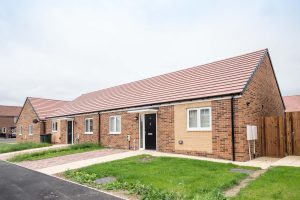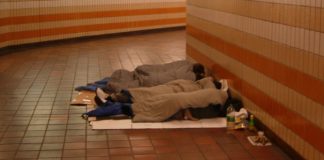The number of people sleeping rough in the North East has more than doubled in the last two years and now stands at a “crisis point” record high.
New snapshot figures released by the Government on Thursday revealed what charities have branded a “shameful” spike in the number of people living on the nation’s streets and children who are homeless in temporary accommodation.
There were an estimated 124 people sleeping rough across the North East on a single night in autumn 2024, according to the Ministry of Housing, Communities and Local Government.
That is the highest number the region has recorded since records began in 2010, marking a 39% increase from the 89 recorded at the equivalent time in 2023 and is more than double the figure of 61 in 2022.

The areas with the highest numbers of rough sleepers in the North East and Tees Valley were Middlesbrough with 25, Newcastle with 21, County Durham with 18, and Northumberland with 13. All other local authorities in the region had numbers in single figures.
However, the North East actually has fewer rough sleepers than any other region in England – both in terms of total number and the rate of rough sleeping per 100,000 people.
Across the country, there were as estimated 4,667 people sleeping rough on a given night, a 20% increase over 12 months.
Ruth Parker, chief executive of South Shields-based homelessness charity Emmaus North East, told the Local Democracy Reporting Service (LDRS) that the problem had become “an issue of national shame” and was now at “crisis point”.
She added: “Unfortunately it is not a surprise to me. What I see is more referrals and people with more complex needs. A 39% increase in rough sleeping in the North East really bothers me and I think it is just the tip of the iceberg.
“What you don’t see in those numbers is the people who are sofa surfing, or the people who on that particular night were in a cafe or wherever.”
Ms Parker blamed underfunding of homelessness services by successive governments, the sale of council houses and a lack of new-build social housing to replace them, and the impact of the cost of living crisis for the escalating numbers of people on the streets.
She said that solving the problem was not simply about “putting a roof over someone’s head” and would require wider interventions dealing with issues like trauma recovery and drug and alcohol dependence.
Ms Parker told the LDRS: “Anybody can only be a couple of steps away from homelessness, with a job loss or a marital breakup. Depending on the support network around you, people that you would never expect can end up on the street.
“We have supported professional people like teachers this year. These are people who most people would never expect to be in homeless accommodation.”
Homeless Link chief executive Rick Henderson called it “beyond devastating and shameful that our society has allowed thousands upon thousands of people to face the trauma of sleeping rough across this country”.
Separate data also published on Thursday showed that the number of children living in temporary accommodation in England hit a record high of 164,040 at the end of September 2024.
A total of 126,040 households in England were homeless in temporary accommodation at the time, up 16% in a year and another record high figure.
1,170 of those households were in the North East, again the lowest of any region in England, including 810 children.
50 of the total 380 households with children in North East temporary accommodation were living in Bed and Breakfasts and a further 20 in hostels.
Polly Neate, chief executive of housing charity Shelter, said: “It is unacceptable that homelessness continues to rocket when the government has the power to end it entirely.
“Thousands of children are being robbed of stability in temporary accommodation, crammed into B&Bs and hostels without any space to sleep, play or do their homework. Whole families are being uprooted at a moment’s notice, forcing children to travel hours to school, leaving them exhausted and falling behind.
“Homelessness has a simple solution – a safe, secure social rent home gives everyone the chance to succeed, but there’s nowhere near enough. If the government is serious about tackling the housing emergency, we must see ambitious investment in social housing in June’s Spending Review. Investing in 90,000 social rent homes a year for ten years would give families a fighting chance and end homelessness for good.”
Labour said that the latest homelessness data shows a “completely unacceptable” situation across the UK and insisted the Government was committed to “urgent” action to end the crisis.
A Downing Street spokesperson added: “They demonstrate a devastating and acute homelessness crisis we’ve inherited. We’re taking urgent and decisive action to end homelessness for good, including the largest ever investment in homelessness prevention services for this year, with a total of nearly £1 billion.
“In fact, earlier this week, we doubled emergency homelessness funding to £60 million specifically for councils to step in early to keep people in their homes before eviction notices, meaning fewer people reaching crisis points and ending up on the streets.

“We are determined to tackle the root causes of homelessness, committing in our Plan for Change to build 1.5 million new homes, including building the social, affordable homes this country needs, and we’re changing the law to abolish section 21 so-called no fault evictions.”




